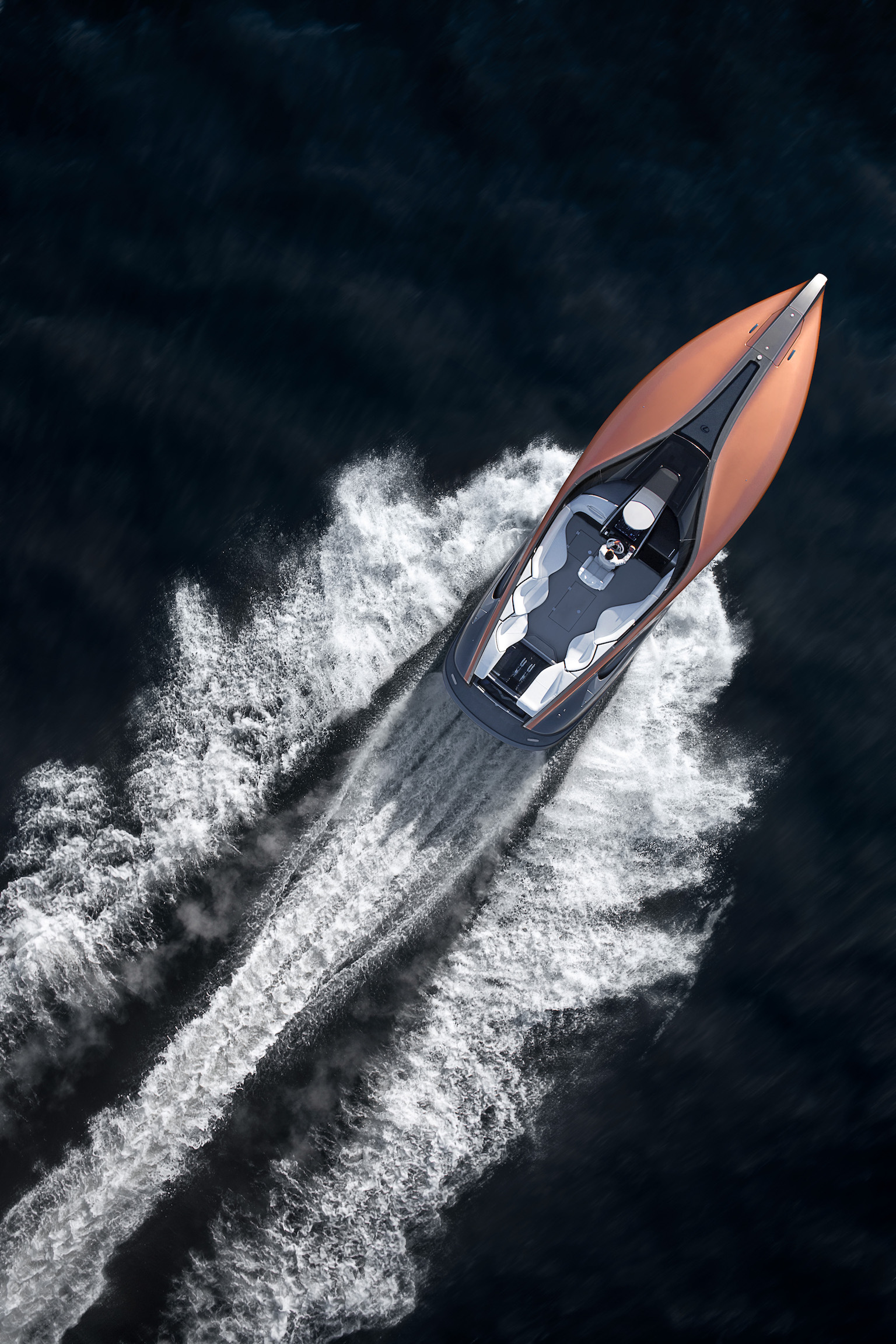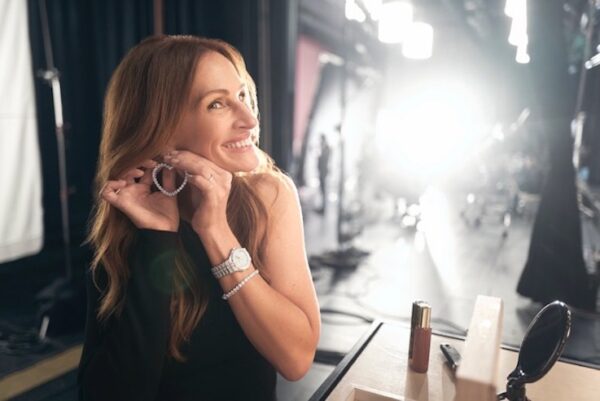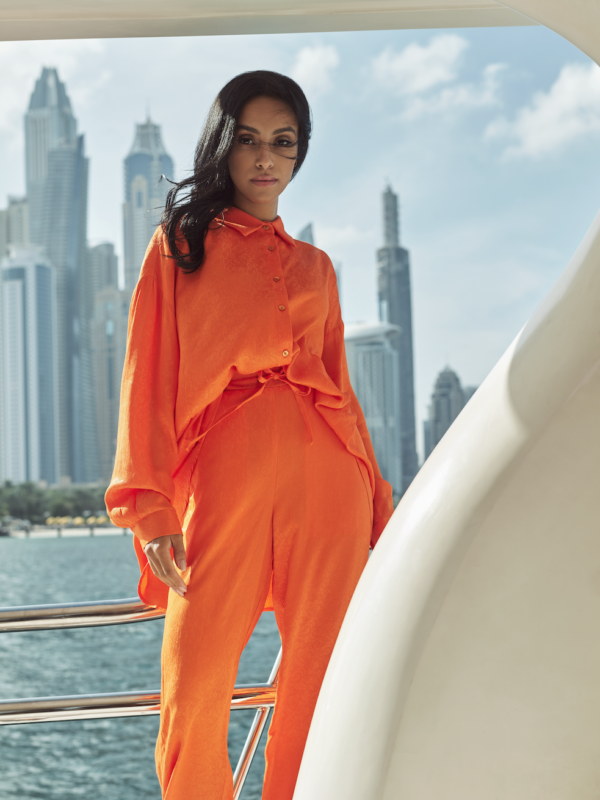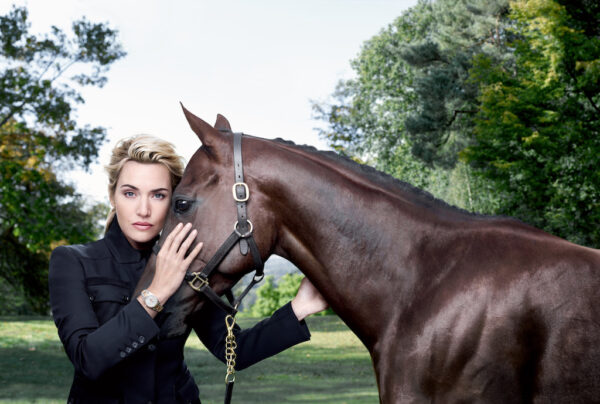Toyota has got the biggest amount of cash in the bank of any company in the world. This and many more things we got to know during an exclusive interview with Paul Williamsen, Manager, Strategic Communications, Lexus International. The past months the Japanese luxury sister brand of Toyota was talk of the town because of its own designed luxury yacht and skyjet. Two designs that open new perspectives and give a different meaning to the brand. Something that the brand could never have reached with yet another new car.
Text: Anja Van Der Borght
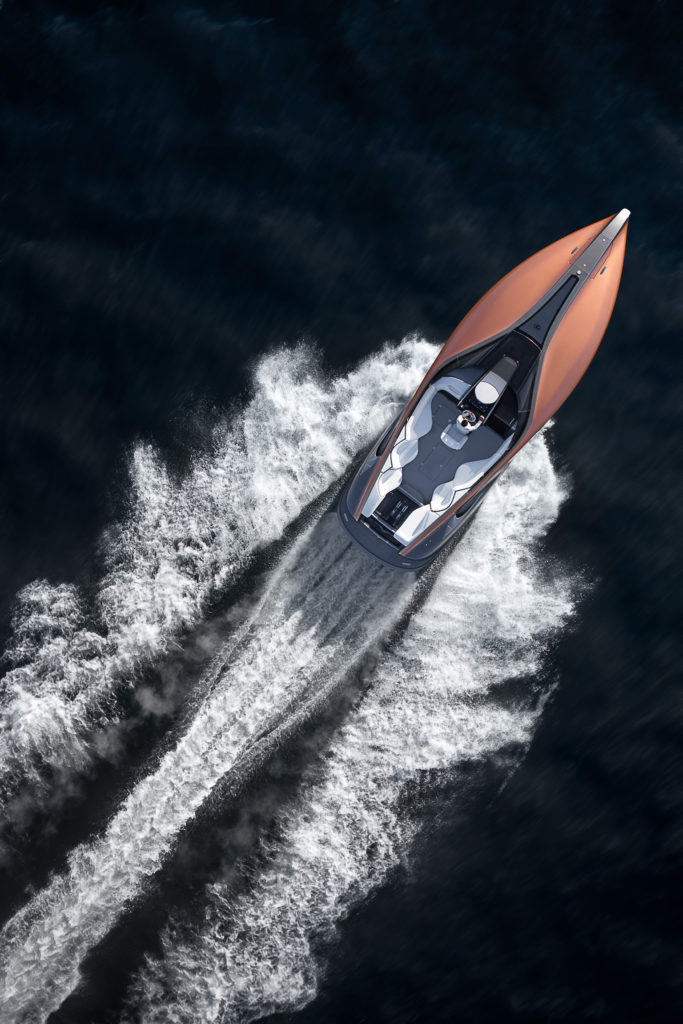
Who launched the idea of the yacht and why?
Paul Williamsen: “It all started about three years ago. The marine department of Toyota that was founded in 1990, invited Toyota Motor Corporation (TMC) President Akio Toyoda to enjoy the high performance, premium luxury yachts built by the Toyota Marine Division. The concept of building a Lexus boat probably originated from that day. You know Toyota is a very large company, being the largest carmaker in the world it is also a very rich company that has the biggest amount of cash in the bank of any company in the world. Akio Toyoda is responsible for all of this, and he is a performance addict. He loves driving cars, and I think when he found out that he owned a boat company too, he did not hesitate to really enjoy the high performance, premium luxury yachts built by the Toyota Marine Division. Akio Toyota found this a way to experience performance and exciting activities, and he found that Toyota should apply this to Lexus. Akio has different roles in the company, but he is also the chief branding officer for Lexus. This means that he gets to shape the direction of Lexus and how he presents Lexus to the customers. So he got this idea, shouldn’t we make a Lexus yacht? And he was able to ask his Marine Division, just please, try to build one.”

You say that Toyota is the company with the largest amount of money in the bank? Can you explain?
Paul Williamsen: “Most years Toyota is ranked as the most valuable company in the world. Not based on share price, but as to money in the bank. It is a very successful company, of course Toyota has been building automobiles since 1937. But that company came out of an older, weaving company and spinning and loom company. So the total company history is maybe a century. So it is a very well established company that has always been focused on building stuff. We even have a Toyota house building company in Japan. You want to build a high quality house, you build a Toyota home… Also the boats from the Toyoda Marine Division are only built in Japan, they don’t export to other markets, so nobody else in the world knows about them, except yacht builders in Japan.”
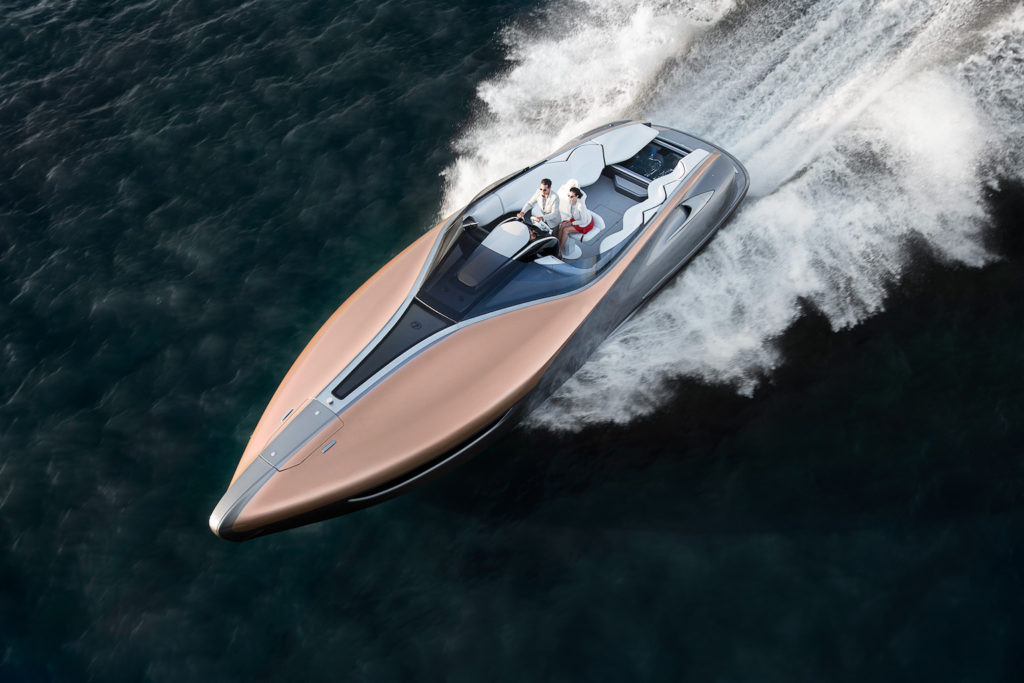
What did the yacht have to look like?
Paul Williamsen: “Out of that discussion with our president, a challenge was given to our Lexus Design Center in Nagoya, Japan, to start just a design exercise, and the question was put to them what would you think a Lexus yacht would look like. It had to be very different from other yachts, Lexus is a different brand, we are not last century’s luxury, we are this century’s premium. Our designers came up with a couple of different concepts, but both of them were for a relatively compact, open performance yacht. In automotive terms we would call this a roadster, it’s designed not to have a hard roof. These concepts were then further refined, to come up with the final design, and honestly, their final design is very much like the yacht you rode in today. So once they had the design, it was up to the marine division to build the thing. In automotive terms, we start off with a concept car, long before the prototypes are built. And that allows us to have something to show and gage customer reaction to. With most concept cars, the doors don’t open, there is no interior inside, if you open the hood, there is no engine under there. And the difference is here, this is a concept boat, but they have put engines in it. So we could drive it, just as you had the opportunity to drive it on Biscayne Bay today.”
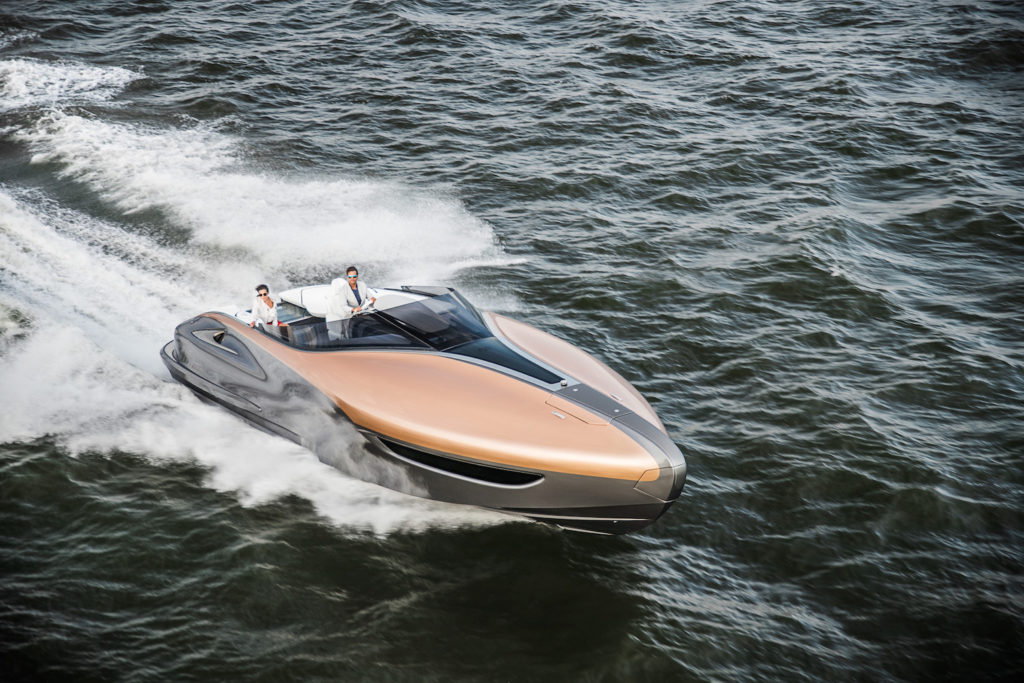
You used carbon fiber instead of fiberglass?
Paul Williamsen: “So the Marine Division engineered the design from Lexus Styling Center. I would like to mention here a technical detail, our Toyota Luxury Yachts in Japan are sold under the ‘Toyota’ and they are very high quality, so to say Lexus quality. They are very expensive, and part of that is, the hull is made of aluminum, that is much more expensive than the way most yachts are built out of a much cheaper fiberglass as construction. As we look at this Lexus Sport Yacht Concept, it wasn’t big enough that it needed an aluminum hull, but for performance it needed to be light in weight. So they decided to use carbon fiber instead of fiberglass. It is much lighter for the same amount of strength, but because the Toyota Marine Division had focused on aluminum hulls, they did not have much expertise in how to manufacture a carbon fiber hull, so they went looking around the world for the best yacht builders who were working in composite hulls, and that led them to select the Marquis-Carver Yacht Group, based in Wisconsin, to build the concept, based on its engineering and manufacturing capabilities and its skills in working with large, hand-laid, composite structures. Marquis made the mould and build the hull for us. So Lexus Design Center designed it, Toyota Marine Division engineered it, Marquis built the mould, laid the carbon fiber and made the hull for us. By using carbon fiber, we were able to save more than a ton compared to a fiberglass hull. That ton equates to extra miles per hour in top speed: this is a linear relationship. Taking out weight also improves steering and handling performance as well, so carbon fiber pays off into a more maneuverable boat, and also it has a higher top speed.”
So there is no aluminum inside?
Paul Williamsen: “Right. The whole structure is pure carbon fibre. The top of the deck, the structure under the floor, the ports are all carbon fibre. No aluminum is used.”
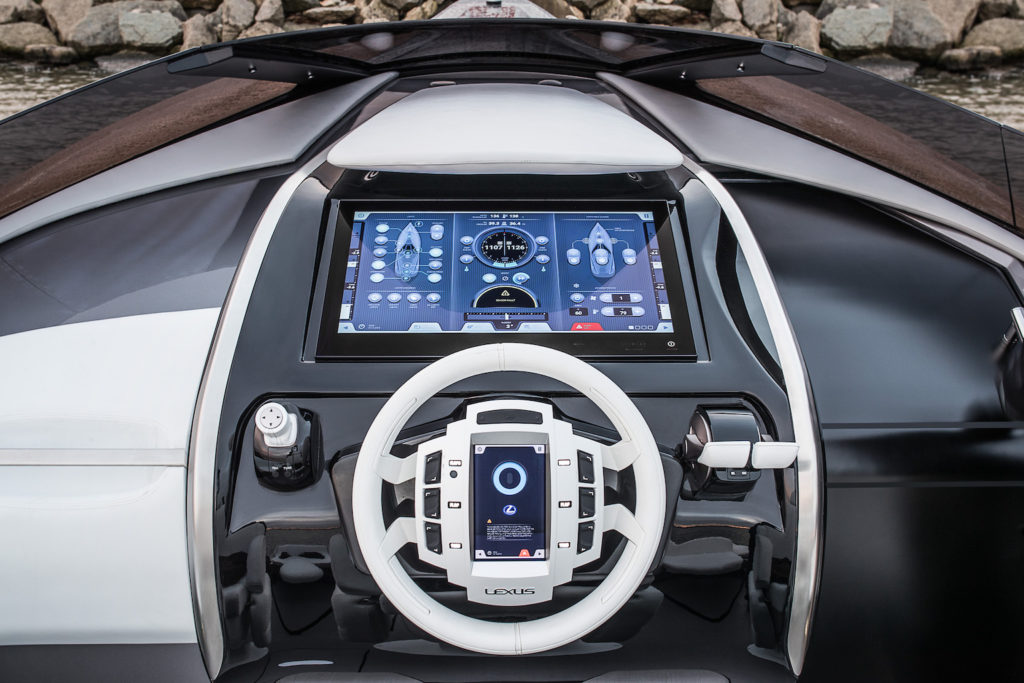
And does this yacht look like a Toyota yacht as well?
Paul Williamsen: “No! Not at all! Because the people who designed it, have never worked on a yacht before. So there is no visual connection between this and the other products made by Toyota Marine.”
You said that the Toyota Yachts are very expensive. What is the price then for instance?
Paul Williamsen: Well the Toyota Yachts cover a pretty broad range. The smallest is maybe a 26 or a 28 foot, which is very popular with the Yachtsmen who like to go fishing, and then they go up to a 35 or a 37 foot luxury cabin cruiser. I think their top line boat is like 2 million dollars. So this is a pretty expensive boat. In the US, people who would buy a comparable boat, would expect to pay less than that. But then they would get a product of much lesser quality. This high quality segment is rather unique, it has also a unique style, and we only built one, by the way. It is a concept. It is not a prototype, not something that we would move into production and make many of.”
You just said that American yachts are not such good quality, but Marquis is the best, isn’t that contradictory?
Paul Williamsen: “Well, the American yacht business has quite a wide spectrum. I shouldn’t dismiss all American yachts, but I should say that, in my experience, quite a few are not up to our standard. I have been impressed, in the two years I have been involved in this project, every time I see a Marquis yacht, I notice how well built they are, every aspect of them, how the hull is made, how the wires are laid out for the electrical system, the hoses are run, every aspect is good. You see, a boat, surprisingly, has quite a harsh usage cycle. First of all, a lot of vibration comes from driving across the waves, and there is no suspension with springs and rubber tires to absorb the bumps. That is rather hard on a boat. It has to take it. Also in the water environment, it is a 100 pct humidity all the time. This poses challenges on corrosion, mechanicals and what have you. So from my perspective, I appreciate a really well made boat, because it should be more trouble free for its owner. So we were rather impressed by Marquis and the quality of its products, and I can say now, having worked close with Marquis for the last year, as they finish the construction of this concept, they achieve Lexus quality. They understand our expectation to deliver a finished product that works, looks, runs, and has the rock solid reliability we expect, and even in a one-off concept, it is still important. See, like today, with 50 journalists from all over the world to get to ride on it, it has to do this.”
So why didn’t Lexus put this subject into a contest, like you gave it to the Lexus designers, who have no experience, why not make it into a contest and then pick the best design?
Paul Williamsen: “That is a very good question. There are certainly a number of ways we could have gone on with that. But I would say two things, the two primary objectives of this project : the first is not commercial. It has nothing to do with building a product and making a revenue, this is simply seeing a Lexus Sports Yacht Concept, and for you, being on it today in Biscayne Bay in Miami. That expands people’s view of the Lexus lifestyle and the Lexus brand, far beyond anything we could do with a car, right? You have been able to experience it in a very different way. So as a lifestyle expression, it is very powerful. Then I think, a different objective for this project could be the question you asked before, about commercial, does it make sense to build it, is there an economic business case. And that for us was very secondary. Maybe it makes sense, maybe it doesn’t, that is not such a big deal. But there is also a third objective, that I do not want to overlook. And that is, our design center, the Lexus Design Center people, they need to stretch their muscles all the time. If we just make them sit in the studio and let them design luxury cars all the time, that doesn’t expand their minds, so they need to take time and design something else for a time. This could be a motorcycle, a scooter, a high speed train, could be something non-transportation. Like designing a building, or an art gallery. Those kind of activities, going out of automotive, expands their skills, their mind, so when they come back to automotive, they can do better work. It is just a great design exercise. And you just saw the reveal of a Skyjet. (the single-seater pursuit aircraft for the forthcoming movie Valerian and the City of a Thousand Planets.) That was also designed by the Lexus design center.” </span>
By the same team?
Paul Williamsen: “A different team! Our Lexus Design Center is pretty big, our product line of Lexus vehicles is large. We have 12 models now, and every year at least a couple of those models have to be refreshed, so the center is pretty large with a few dozens of people” </span>(note: the Design Center started in the ninteties with 30 people).
What is for you the best feature about the yacht?
Paul Williamsen: “What I really like about it, is – and again, you had the opportunity to be on board so you saw both the performance at the helm, at the wheel and the throttles, and secondly also to go below into the salon – I really like the entertainment aspect of this yacht. If you have such a yacht like this, you could easily take six or seven friends with you, and spend the whole day on the water. And with that beautiful cabin, the salon down below, and the galley, the little food preparation area, you know, you could have one or two meals on the water, you could have some beverages, I think this entertainment aspect, in Japanese we use the word “omotenashi”, meaning a uniquely Japanese “over the top” hospitality, is an important aspect. Indeed, you could offer this “omotenashi” for your six or seven guests with you, at a level that would certainly surpass any 42 feet yacht I have ever envisioned. Apart from that I love the way that these twin V8 engines sound and perform. If you have more time, and a bigger piece of water to work on, and you can hold those throttles down, it makes a great sound and delivers great performance and you achieve a great speed. That is also part of Lexus, which has a very high performance image, and we are moving it up every year, and I think this is a great way to expand that performance image of the yacht.”
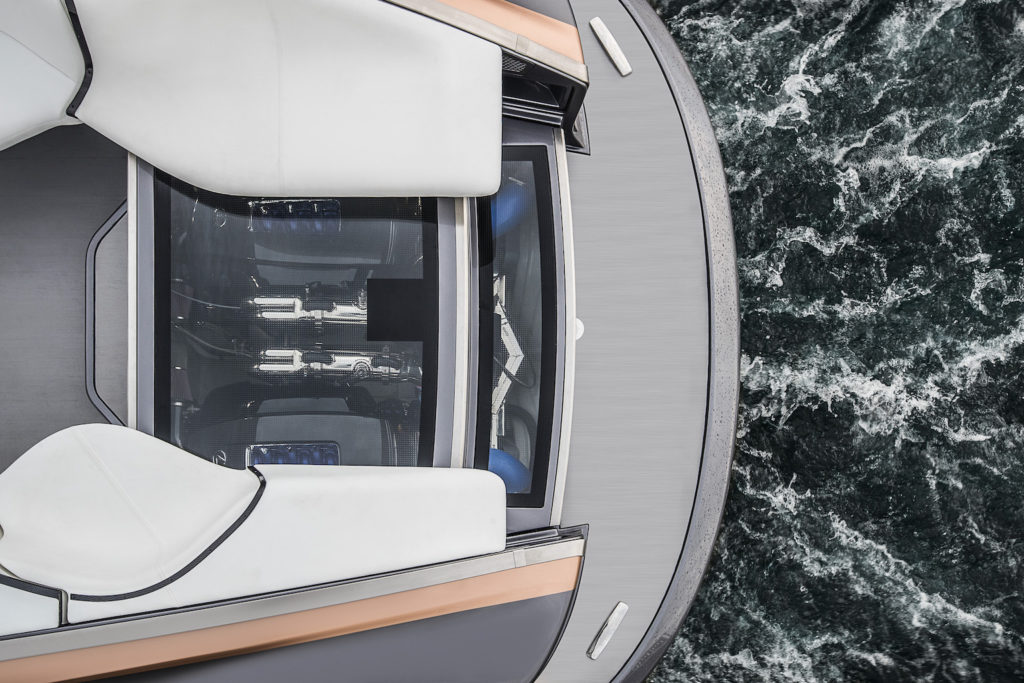
Are two V8 engines enough to get the boat to deliver high performance?
Paul Williamsen: “For a boat of this size, yes it is perfect. If it were a 55 or 60 foot multistory cabin cruiser, that would be a different story. Such a craft would weigh twice as much, and that’s a whole different environment. It would need two large turbodiesels, but this is not so big, it is not so heavy. So it gets great performance from these two V8’s, delivering around 900 horsepower.”</span>
What I miss on this boat is a sundeck for the ladies…
Paul Williamsen: Well, of course, we have the three side seating on each side behind, but you are right, it is not like for lying down and sunbathing. That is also part of why we built a concept. In this case, you saw the glass engine cover. You stepped on the glass, and you looked between your feet and there are the engines down below you. But in reality, maybe the potential customer would like to have that deck with a nice mat so that the cute girls could lay on to work on their suntan. So, until you build the concept, you don’t know, but indeed, when you show it to some customers, you find out that they want it in this or that way. A concept doesn’t have to be practical so much.”</span>
So what would Lexus compare the boat with?
Paul Williamsen: “If you look at the Lexus lineup, just supersmooth, lush luxury sedans, like the ES or the LS, to very sporting performance sedans like the GSF, we have coupés, the RCF which you drove today, and then the stylish new LC 500, you know, I think, this should be more like the LC 500. Very stylish, very aspirational, shouldn’t be something that everybody could afford to buy, but it would be very special for those who can, I think the LC is a good parallel in the automotive world. It is designed for two, but it has back seats. It is of course mostly a personal experience for two people, but you can take others. This is the same for this yacht. It could be one person with a friend out, or it could be a larger group to go out in it.”
SPECIFICATIONS
Overall Length 12.7 m
Beam (width) 3.86 m
Payload 8 people
Power, total 885 horsepower / 897 DIN hp / 660 kW
Top Speed 43 KTS
